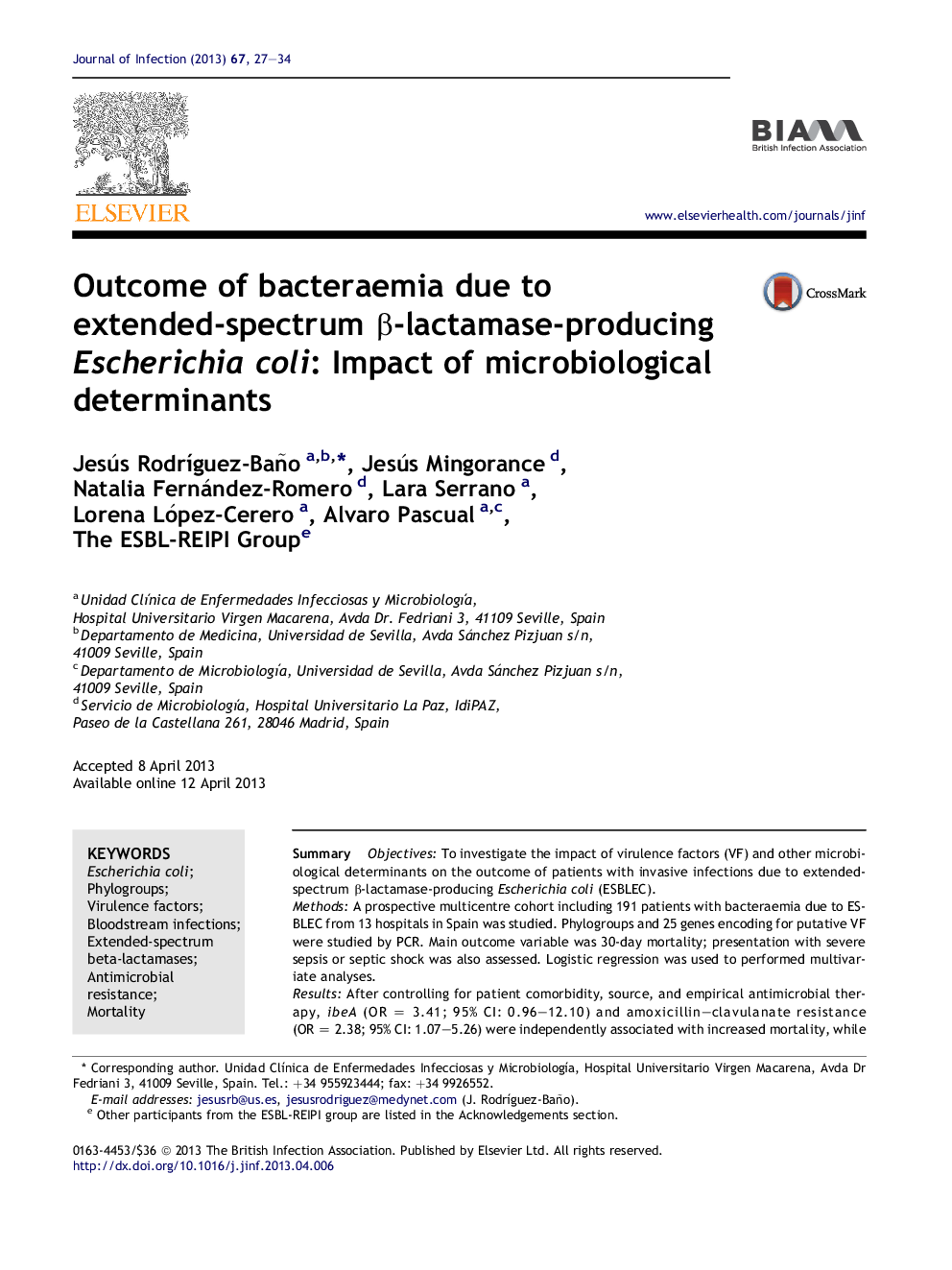| Article ID | Journal | Published Year | Pages | File Type |
|---|---|---|---|---|
| 3374530 | Journal of Infection | 2013 | 8 Pages |
SummaryObjectivesTo investigate the impact of virulence factors (VF) and other microbiological determinants on the outcome of patients with invasive infections due to extended-spectrum β-lactamase-producing Escherichia coli (ESBLEC).MethodsA prospective multicentre cohort including 191 patients with bacteraemia due to ESBLEC from 13 hospitals in Spain was studied. Phylogroups and 25 genes encoding for putative VF were studied by PCR. Main outcome variable was 30-day mortality; presentation with severe sepsis or septic shock was also assessed. Logistic regression was used to performed multivariate analyses.ResultsAfter controlling for patient comorbidity, source, and empirical antimicrobial therapy, ibeA (OR = 3.41; 95% CI: 0.96–12.10) and amoxicillin–clavulanate resistance (OR = 2.38; 95% CI: 1.07–5.26) were independently associated with increased mortality, while papGII showed a protective effect (OR = 0.18; 95% CI: 0.04–0.87). When these 3 variables were deleted from the multivariate model, the area under the ROC curve decreased only from 0.83 to 0.77. papGII also showed a protective effect for presentation with severe sepsis or septic shock (adjusted OR = 0.34; 95% CI: 0.10–1.14).ConclusionSome pathogen-associated determinants showed a significant although limited impact on outcome in bacteraemic infections due to ESBLEC, and should be further studied as potential therapeutic or preventive targets.
